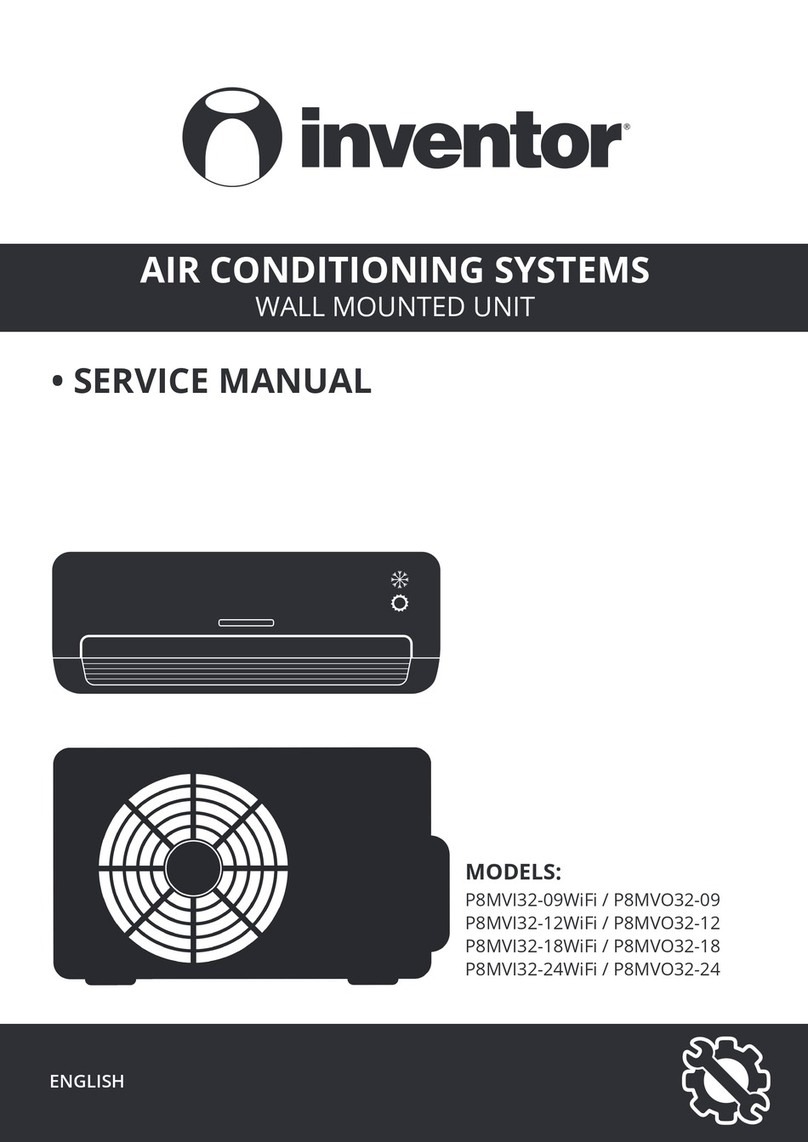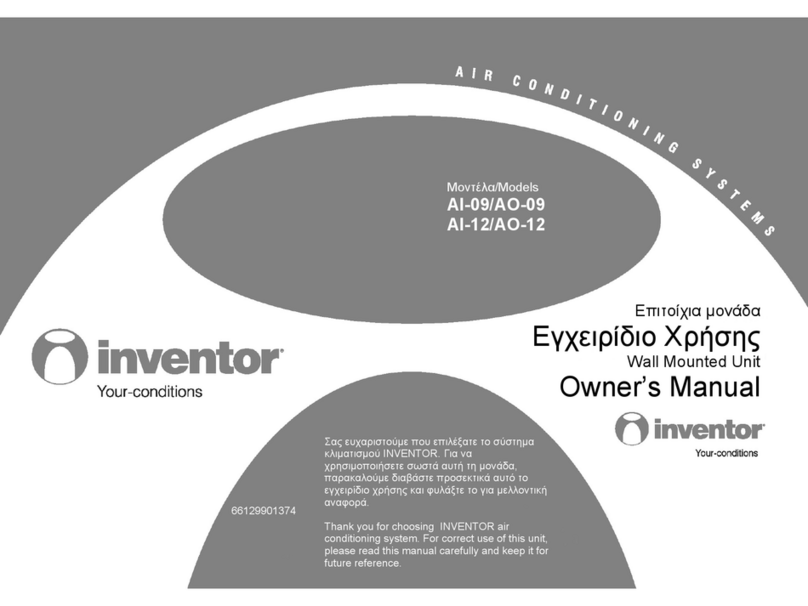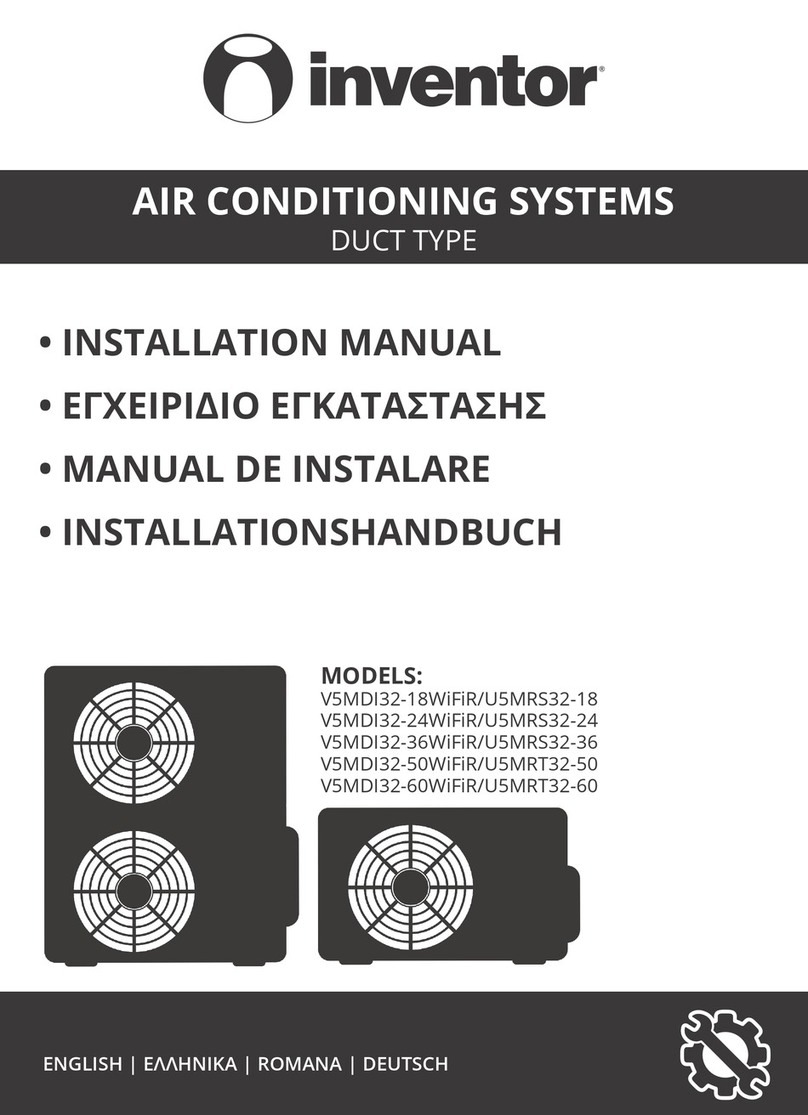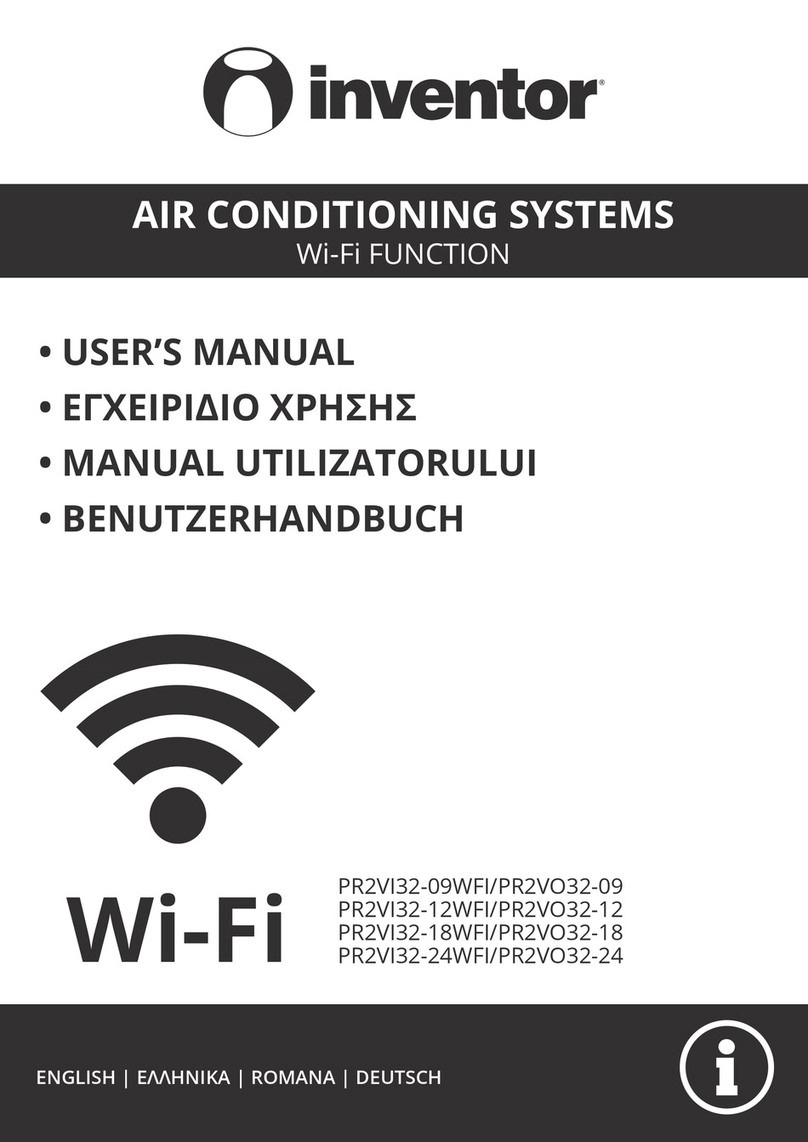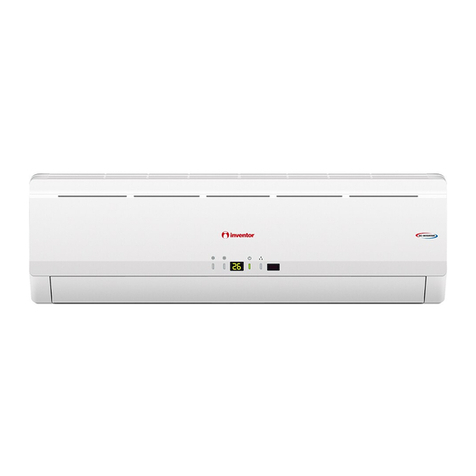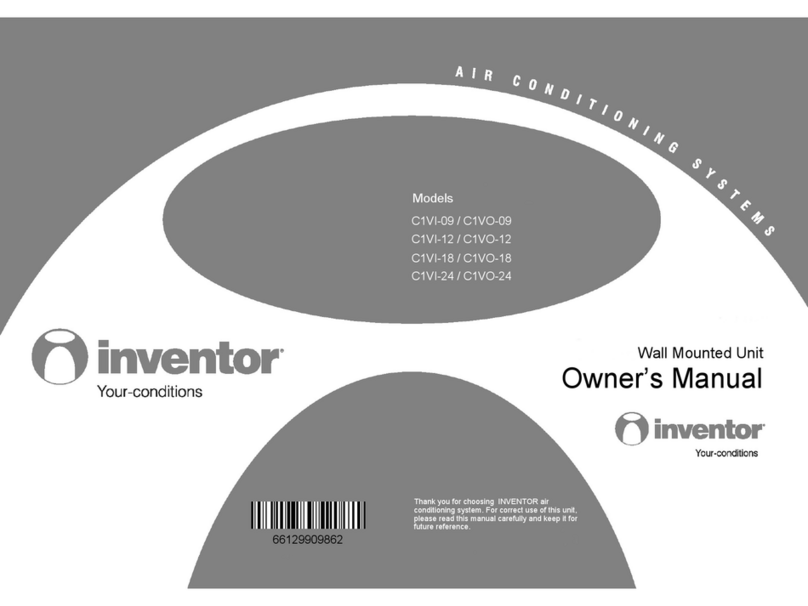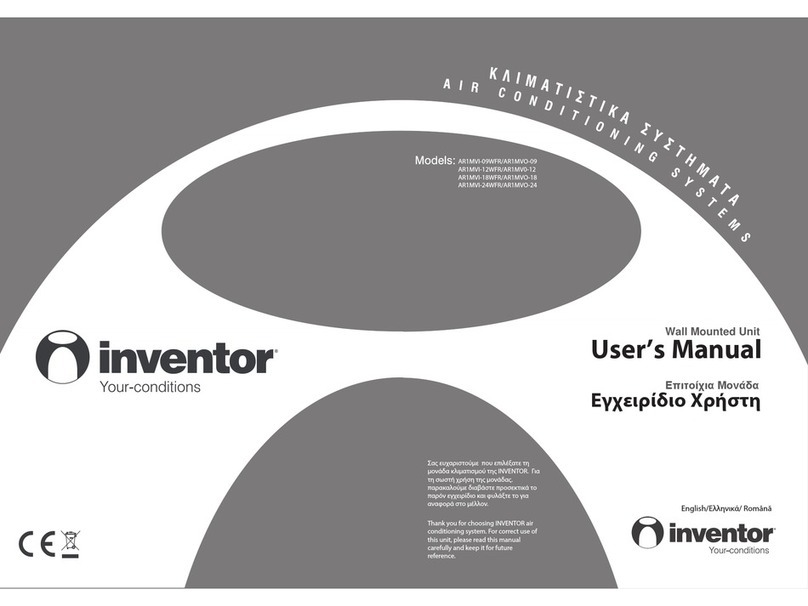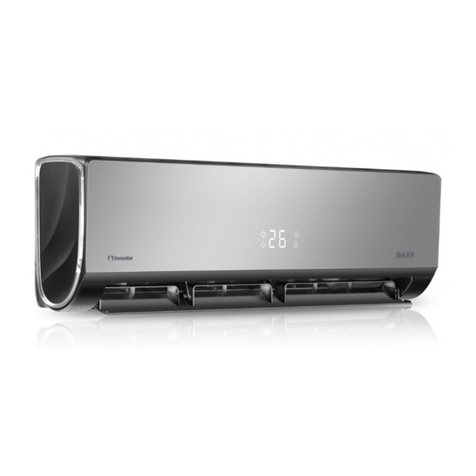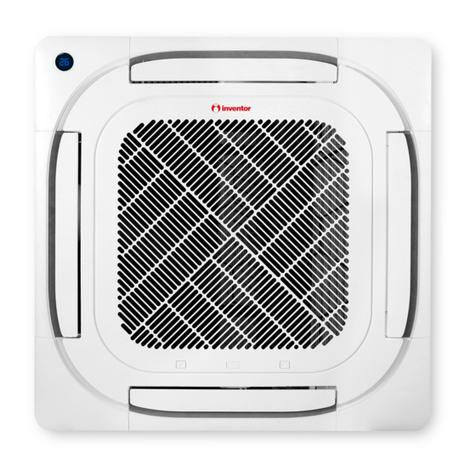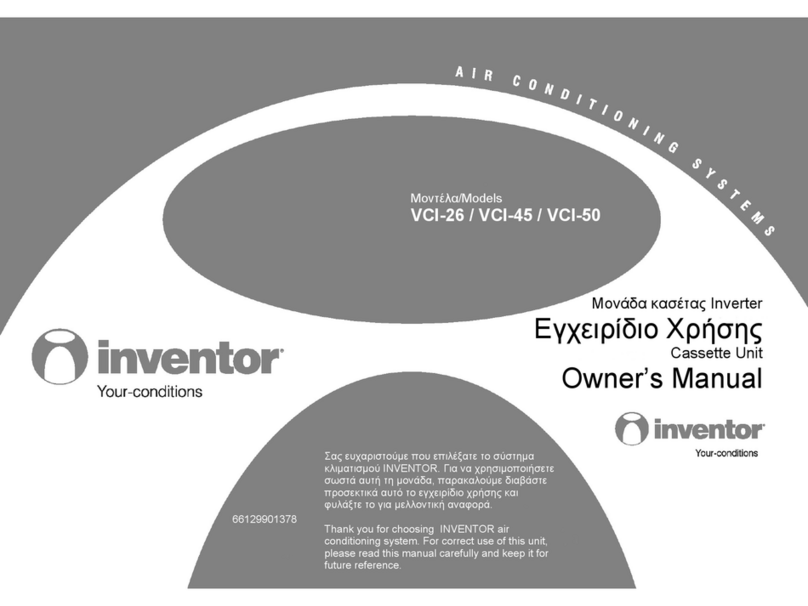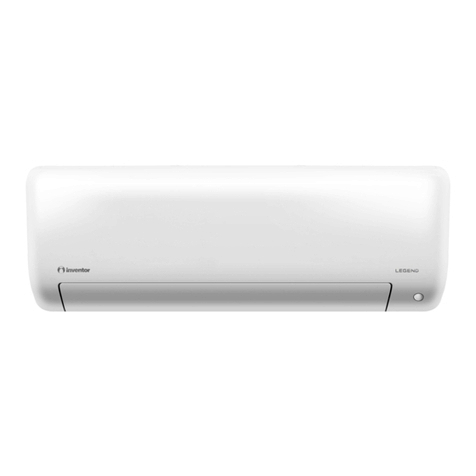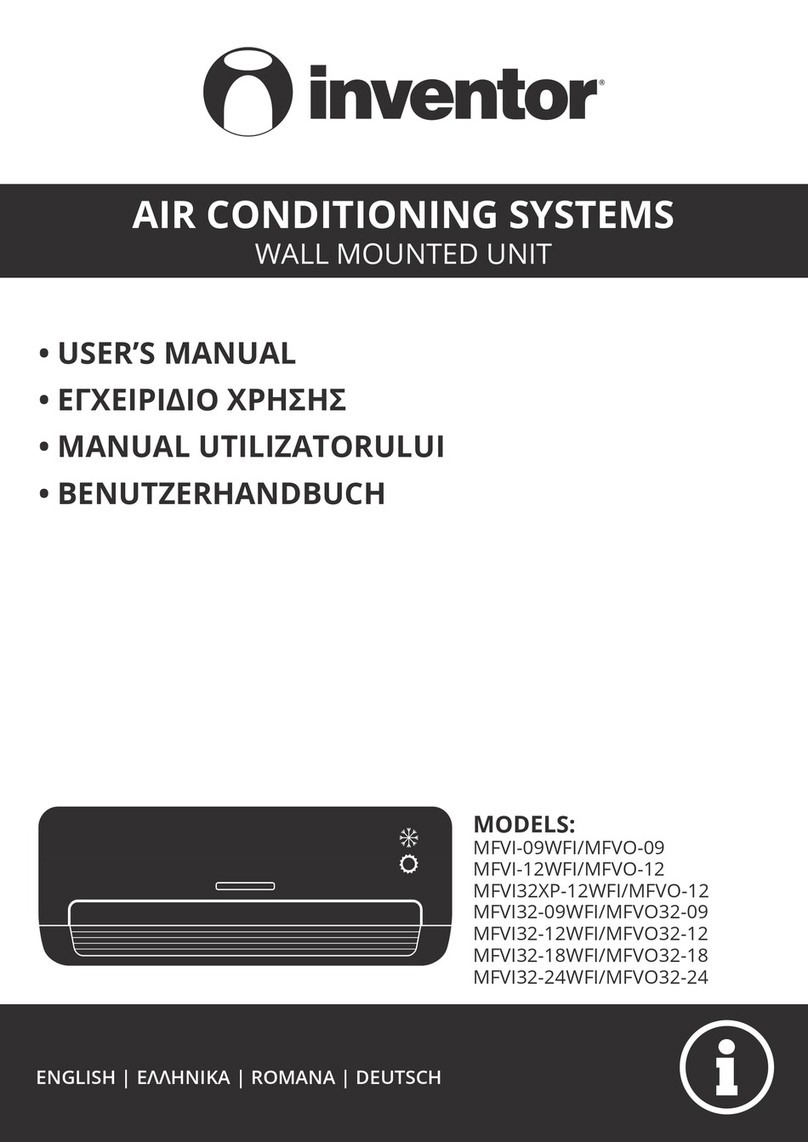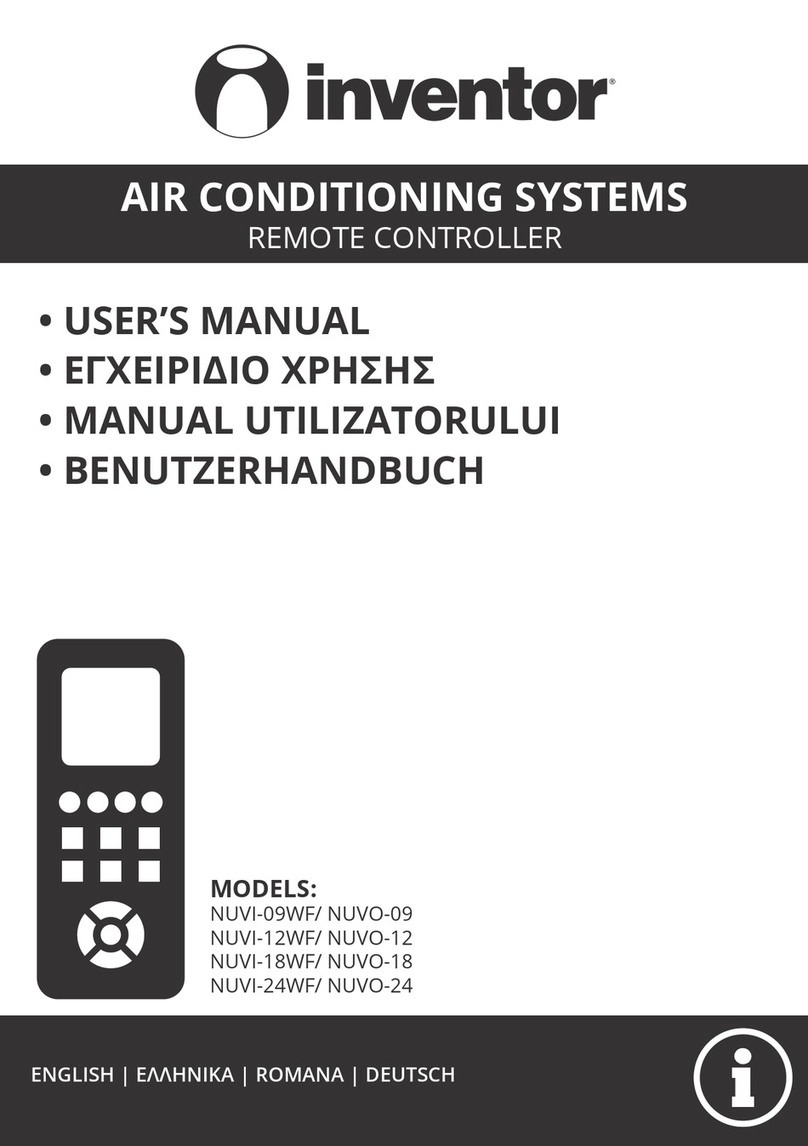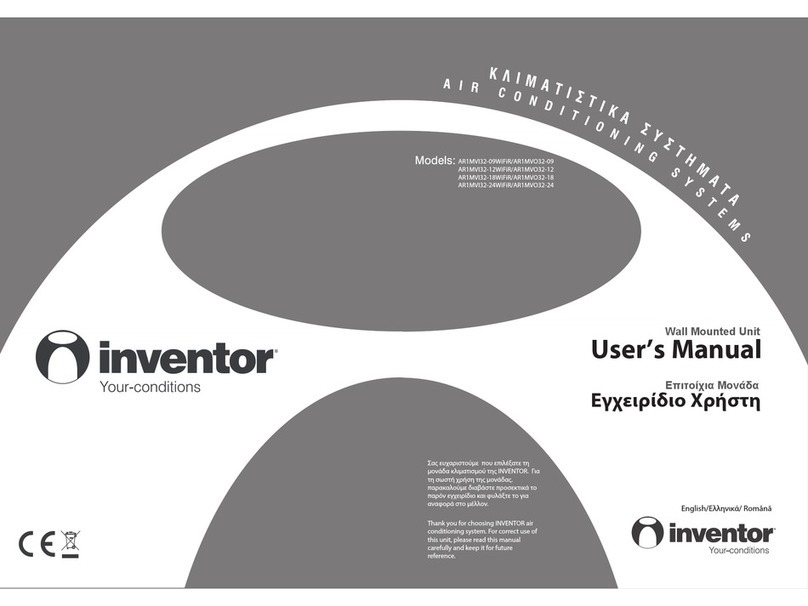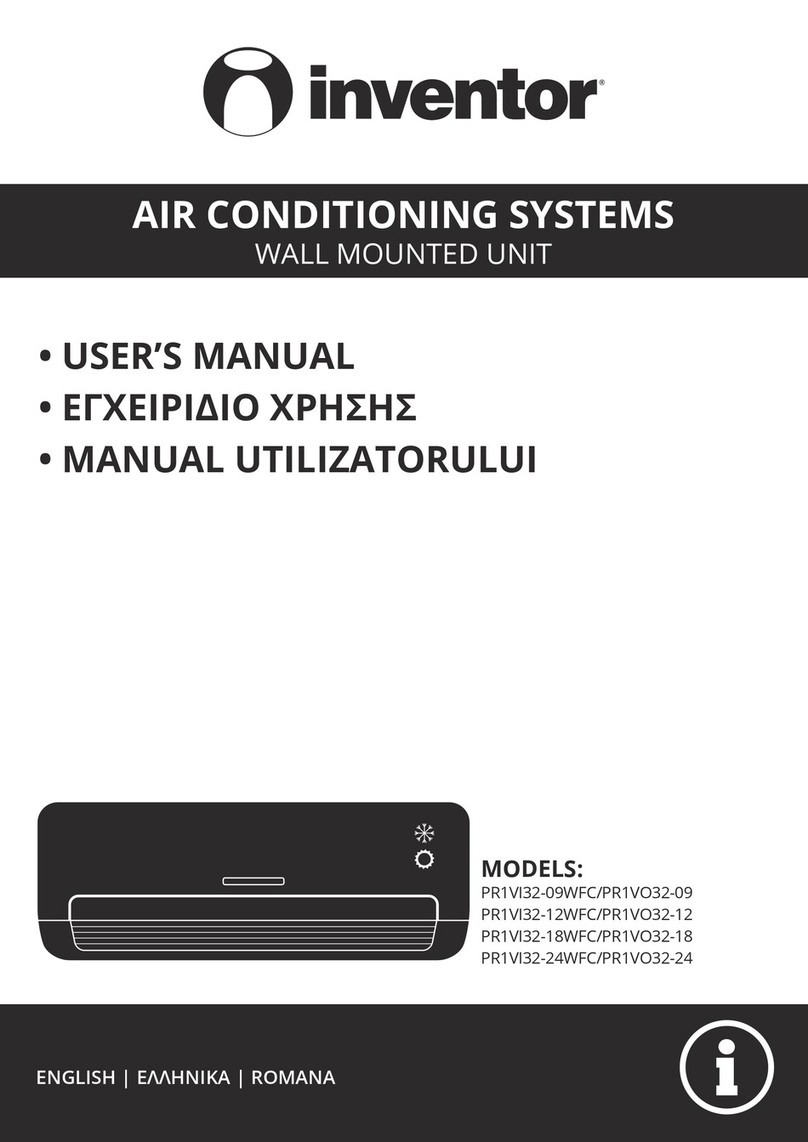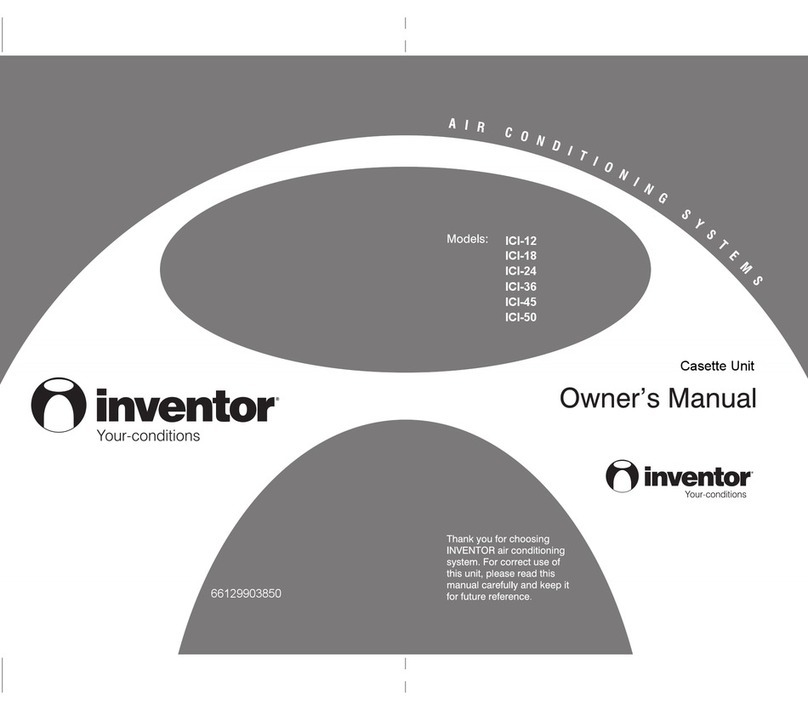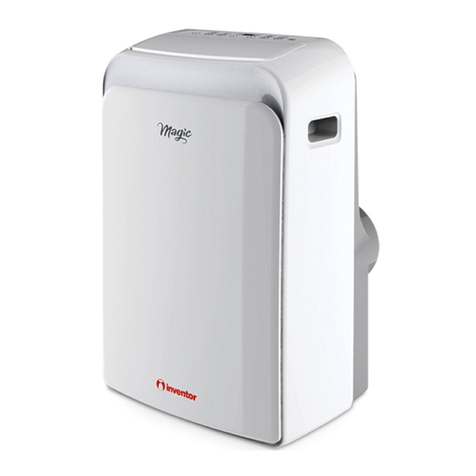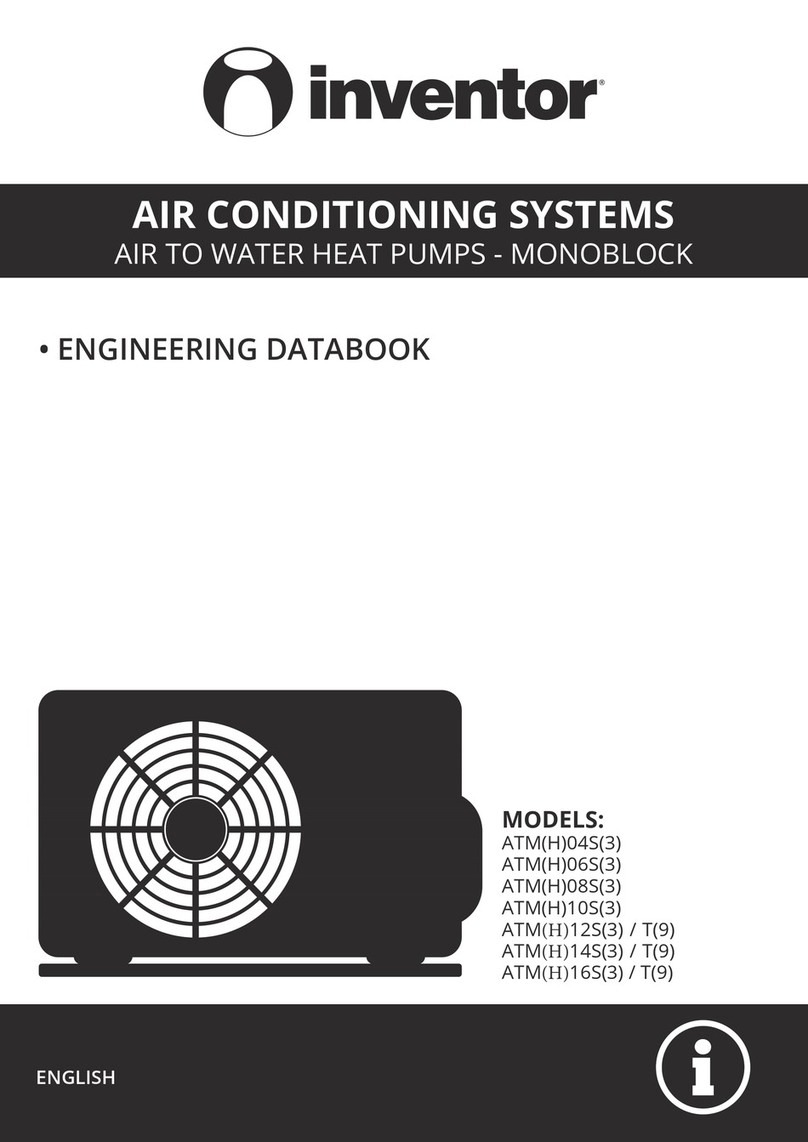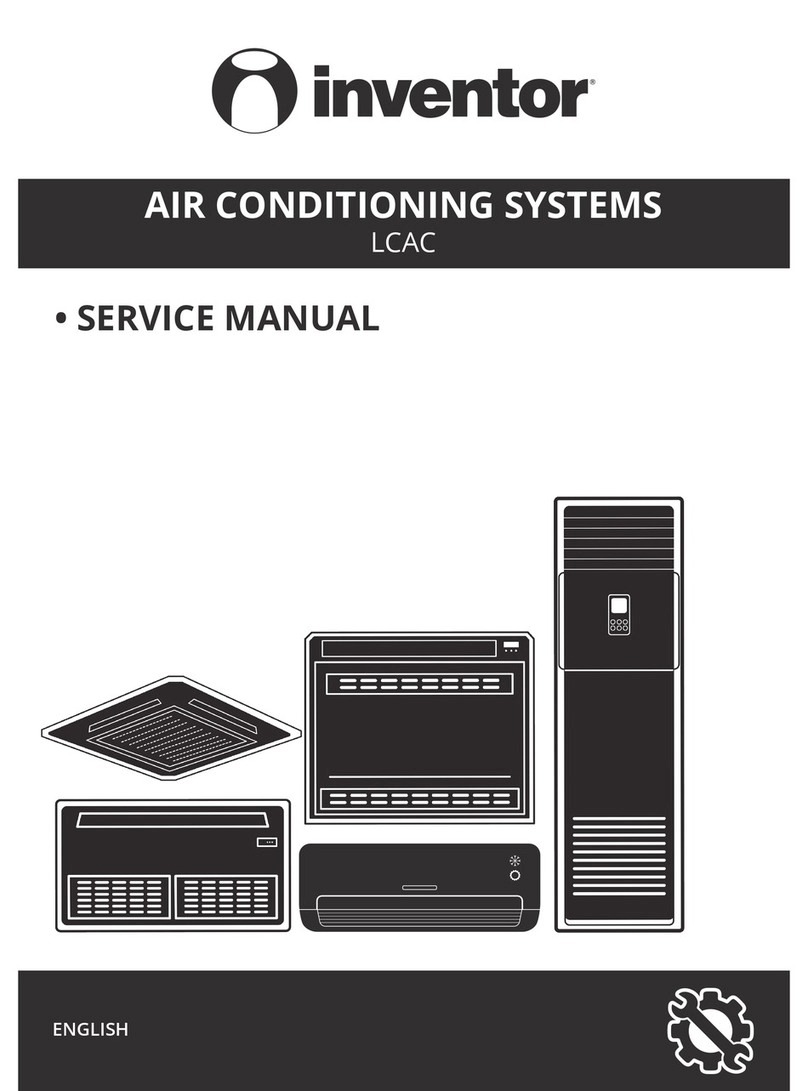
Page 4
This symbol indicates that ignoring instructions may cause death or serious
injury.
This symbol indicates that ignoring instructions may cause moderate injury
to your person, or damage to your unit or other property.
Safety Precautions
Read Safety Precautions Before Installation
Incorrect installation due to ignoring instructions can cause serious damage or injury.
The seriousness of potential damage or injuries is classified as either a WARNING or CAUTION.
WARNING
CAUTION
WARNING
Do notmodify the length of the power supply cord or use an extension cord to power the unit.
Do not
Do not
share the electrical outlet with other appliances. Improper or insufficient power supply
can cause fire or electrical shock.
When connecting refrigerant piping, do not let substances or gases other than the specified
refrigerant enter the unit. The presence of other gases or substances will lower the unit’s capacity,
and can cause abnormally high pressure in the refrigeration cycle. This can cause explosion and injury.
allow children to play with the air conditioner. Children must be supervised around the
unit at all times.
1.
Installation must be performed by an authorized dealer or specialist. Defective installation can
cause water leakage, electrical shock, or fire.
2.
Installation must be performed according to the installation instructions. Improper installation can
cause water leakage, electrical shock, or fire. (In North America,installation must be performed in
accordance with the requirement of NEC and CEC by authorized personnel only.)
3.
Contact an authorized service technician for repair or maintenance of this unit.
4.
Only use the included accessories, parts, and specified parts for installation. Using non-standard
parts can cause water leakage, electrical shock, fire, and can cause the unit to fail.
5.
Install the unit in a firm location that can support the unit’s weight. If the chosen location cannot
support the unit’s weight, or the installation is not done properly, the unit may drop and cause
serious injury and damage.
This symbol indicates that you must never perform the action indicated.
6.
7.
8.
9.
10.
Do not use means to accelerate the defrosting process or to clean, other than those
recommended by the manufacturer.
The appliance shall be stored in a room without continuously operating ignition sources
(for example: open flames,an operating gas appliance or an operating electric heater)
Do not pierce or burn.
Appliance shall be stored in a well -ventilated area where the room size corresponds to the
room area as specifiec for operation.
Be aware that refrigerants may not contain an odour.
NOTE: Clause 7 to 10 are required for the units adopt R32/R290 Refrigerant.
Page 5
WARNING
11.
For all electrical work, follow all local and national wiring standards, regulations, and the
Installation Manual. You must use an independent circuit and single outlet to supply power. Do
not connect other appliances to the same outlet. Insufficient electrical capacity or defects in
electrical work can cause electrical shock or fire.
12.
For all electrical work, use the specified cables. Connect cables tightly, and clamp them securely to
prevent external forces from damaging the terminal. Improper electrical connections can overheat
and cause fire, and may also cause shock.
13.
14.
15.
16.
All wiring must be properly arranged to ensure that the control board cover can close properly. If
the control board cover is not closed properly, it can lead to corrosion and cause the connection
points on the terminal to heat up, catch fire, or cause electrical shock.
This appliance can be used by children aged from 8 years and above and persons with reduced
Physical, sensory or mental capabilities or lack of experience and knowledge if they have been given
supervision or instruction concerning use of the appliance in a safe way and understand the hazards
involved. Children shall not play with the appliance. Cleaning and user maintenance shall not be
made by children without supervision.
CAUTION
For units that have an auxiliary electric heater, do not install the unit within 1 meter (3 feet) of
any combustible materials.
Do not
install the unit in a location that may be exposed to combustible gas leaks. If combustible
gas accumulates around the unit, it may cause fire.
Do not operate your air conditioner in a wet room such as a bathroom or laundry room. Too
much exposure to water can cause electrical components to short circuit.
1.
The product must be properly grounded at the time of installation, or electrical shock may occur.
In certain functional environments, such as kitchens, server rooms, etc., the use of specially
designed air-conditioning units is highly recommended.
If the supply cord is damaged, it must be replaced by the manufacturer, its service agent or similarly
qualified persons in order to avoid a hazard.
Note about Fluorinated Gasses
1. This air-conditioning unit contains fluorinated gasses. For specific information on the type of gas
and the amount, please refer to the relevant label on the unit itself.
Compliance with national gas
regulations shall be observed.
2. Installation, service, maintenance and repair of this unit must be performed by a certified technician.
3. Product uninstallation and recycling must be performed by a certified technician.
4. If the system has a leak-detection system installed, it must be checked for leaks at least every 12 months.
When the unit is checked for leaks, proper record-keeping of all checks is strongly recommended.
2. Install drainage piping according to the instructions in this manual. Improper drainage may cause
water damage to your home and property.
3.
The appliance shall be stored so as to prevent mechanical damage from occurring.
4. Any person who is involve with working on or breaking into a refrigerant circuit should hold a
current valid certificate from an industry-accredited assessment authority, which authorizes
their competence to handle refrigerants safely in accordance with an industry recognized
assessment specification.
